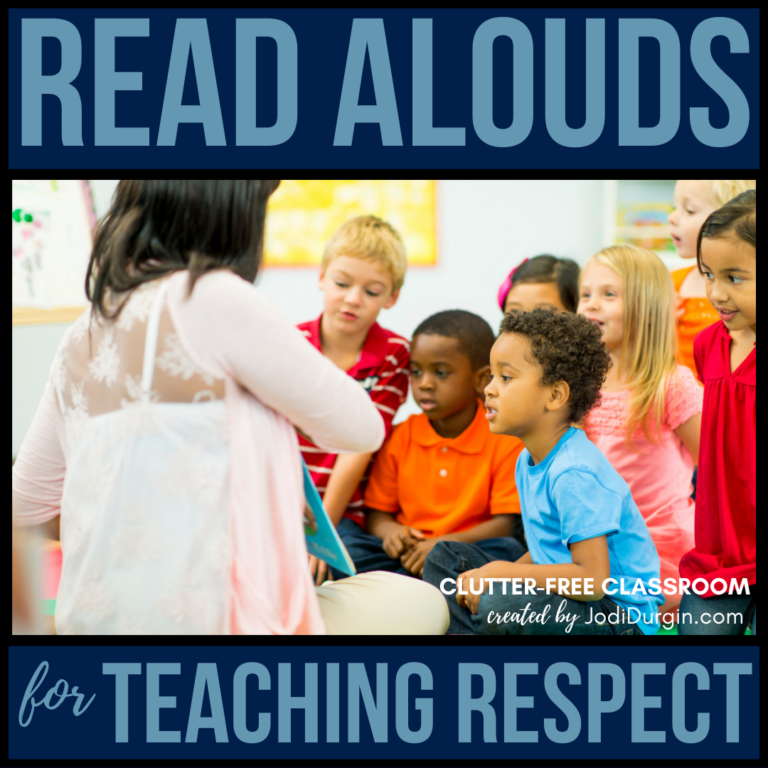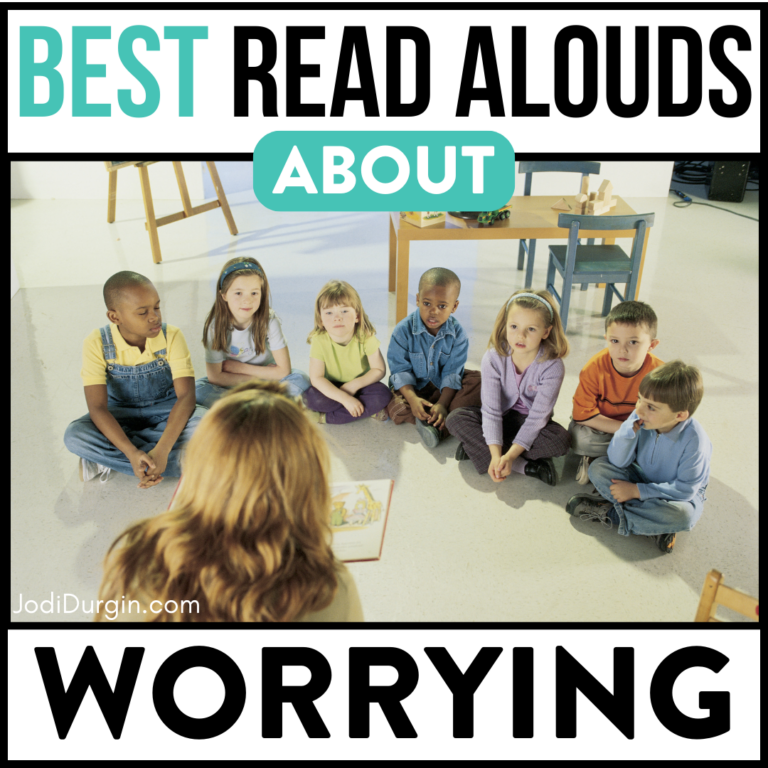Teaching social awareness to students at the elementary can feel overwhelming. Luckily, it doesn’t have to be! This post includes tons of information about the SEL topic, social awareness.
The Collaborative for Academic, Social, and Emotional Learning (CASEL) created a social emotional learning (SEL) framework. This SEL framework includes five core competencies – one of which is social awareness skills. Teaching social awareness skills is an essential part of social emotional learning curriculum.
This post answers the following questions teachers have about teaching social awareness to students:
- What is social awareness?
- Why is teaching social awareness skills important?
- How can I help my students improve their social awareness skills?
- What are some tips I can share with my students’ families about helping their child improve their social awareness skills?
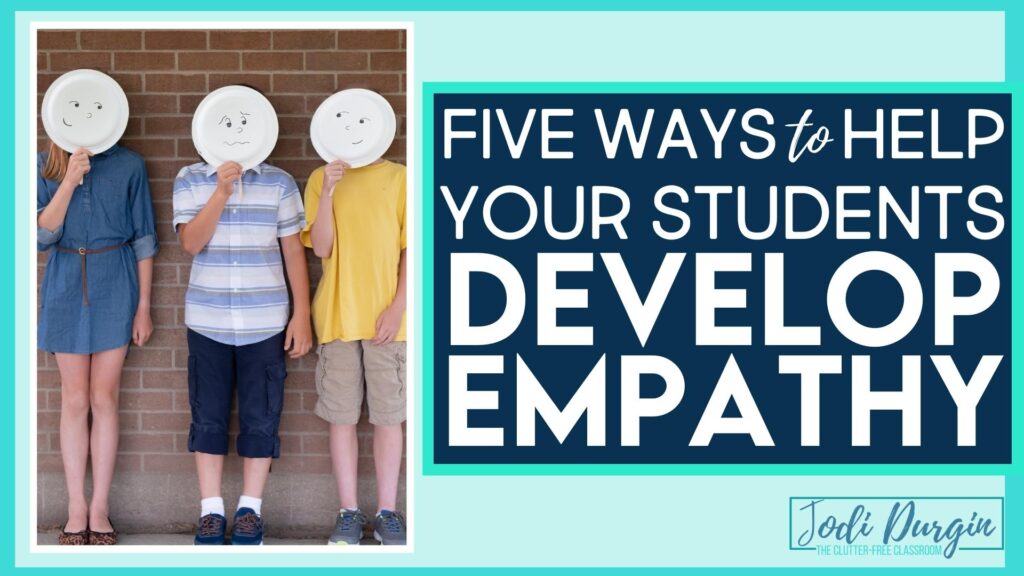
What is Social Awareness?
Social awareness is the ability to take the perspective of and empathize with others. It also includes the ability to empathize with people from diverse backgrounds and cultures. People who have social awareness also have the ability to understand social and ethical norms for behavior. They recognize that they have availability to resources from school, family and community.
Why is Social Awareness Important?
Social awareness is important because it gives students the ability to form deeper connections. Social awareness is where empathy is fostered. It creates the ability for students to interact positively and kindly with their peers. In addition, it fosters the ability of students to identify and understand what other people are thinking. It is also important for students because it improves their social skills by interacting with people who have different perspectives.
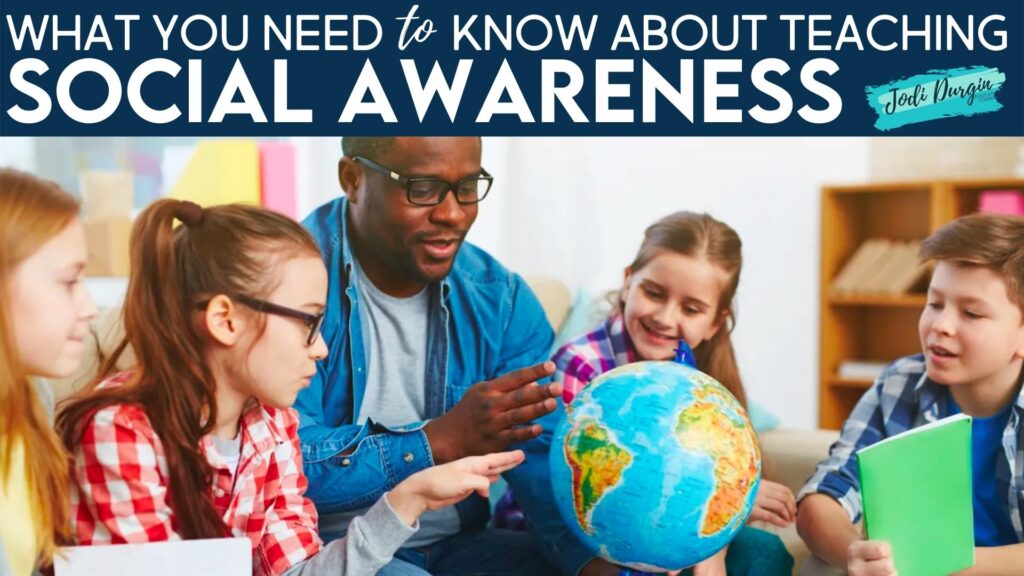
A Deeper Dive into Social Awareness
Below is more information to know before teaching social awareness to students.
Perspective-taking
This involves the ability of a person to look at a situation or concept from a different point of view than their own. This fosters the ability of students to understand situations from their classmates’ perspective when trying to solve problems and interact responsibly in the classroom.
Empathy
Empathy is the ability to understand and share the feelings of another person. This is where the saying “put yourself in someone else’s shoes” is applicable. Asking students how another person is feeling and why they are feeling that way is a great way to practice.
Appreciating diversity
This is the ability of students to learn the value in recognizing that each individual is unique. Further, they see differences as something that should be celebrated rather than ignored or argued about.
Respect for others
This is where the components of social awareness all tie in together. Respect for others involves students taking what they learned about perspective taking, empathy, and appreciating diversity and tying it all together to show respect for others. Respect for others involves students seeing the world with an open mind. They can ask questions about it without making judgements. Students are asked to treat each other with kindness and curiosity rather than hatred and prejudice.
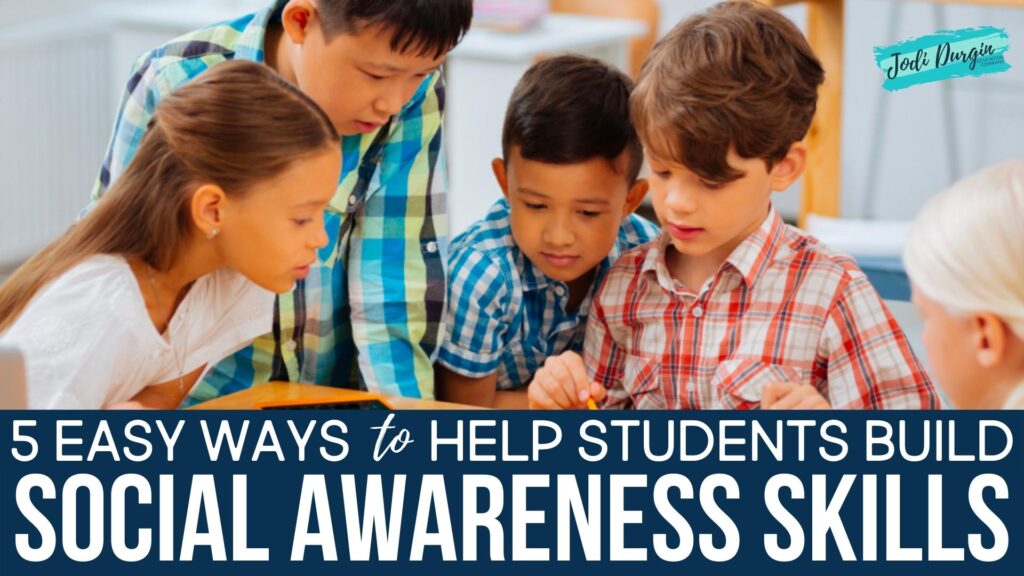
5 Strategies for Helping Kids Improve Social Awareness
Below are 5 teaching strategies for teaching students social awareness.
1. Role play
Role playing is an excellent strategy for students to use to practice taking the perspective of someone else. It helps them see a situation from a different perspective by putting themselves in someone else’s shoes. You can have situation task cards that you want students to practice being in. The decisions students make when faced with the problems will provide lots of helpful information. You’ll be able to see if they understand social awareness or if they need more practice. These SEL units include role playing activities.
2. Books with diversity
Read books that have diverse characters and have representation of people of different cultural backgrounds. In order to appreciate diversity and develop respect for others, students need to see diverse representation. These SEL units include read aloud lessons and activities.
3. Identify emotions in photos
Using photos is a great way to have students practice identifying emotions. Find photos that aren’t just a face but also have a background. Magazines are a great source. Have students think about what each person in the photos are feeling and why.
4. Teach social cues
Students who are learning about empathy benefit from learning about facial expressions, body language, and tone of voice. Teach students that these are also important in determining how a person is feeling. Videos and teacher monitoring are great ways to show this.
5. Teaching seeing other opinions
For some students, especially the younger ones, the fact that people have different opinions than them can be shocking. One way to help students see that students have different opinions is through surveys. Some examples of survey topics are favorite food, favorite color, and favorite animal. This exercise helps students begin to see other perspectives.
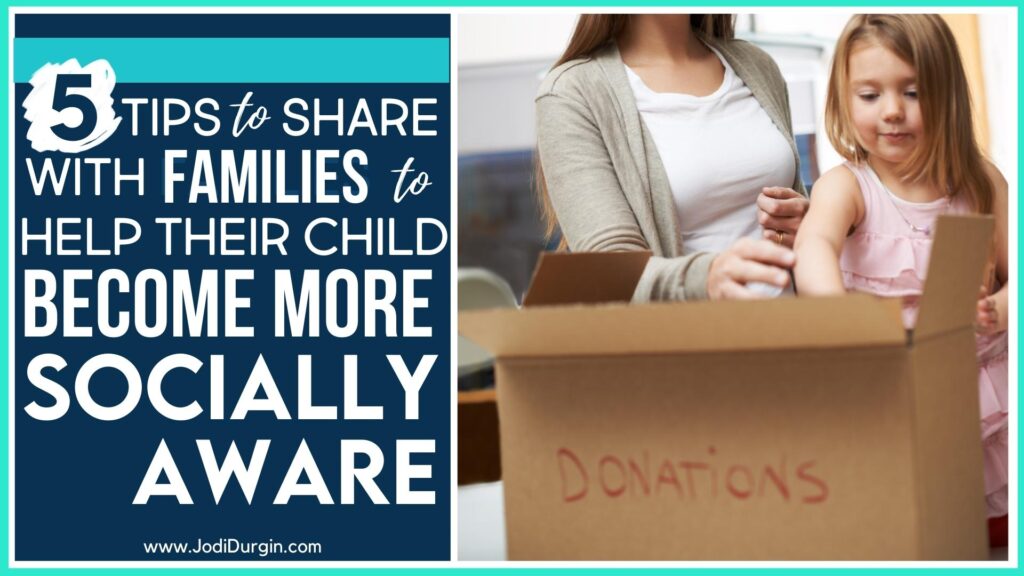
5 Tips for Families
Below are 5 tips teachers can share with their students’ families after they introduce and teach social awareness to students.
1. Empathy conversations
Pause while reading a book, watching a tv show, or watching a movie to talk. Discuss how the characters are feeling, what caused them to feel that way, and why they might feel that way. This is an easy activity that can be adapted to your daily routine.
2. Use empathetic language
Language choice is important when your child is developing empathy. Using “She’s having a hard time sharing her toys today” is more empathetic than “She’s being selfish”. Saying “That person is having a hard time using kind words today” is better than “They are being mean”.
3. Name and talk about feelings
Talking about feelings normalizes them and gives your children the ability to start to recognize them in themselves. Name the feelings that you are experiencing and talk about why you are experiencing them. Your child recognizing your feelings is the first step in them being able to recognize them in others.
4. Modeling
Model treating people with empathy, kindness, and respect. Your child will be learning about empathy and social awareness in school, but you have a much greater influence. They will be looking to you to see it modeled in the real world. Be cognizant of what you say and do around your children.
5. Involve your child in the community
Community engagement can open children’s eyes up to the diversity around them. It also opens their eyes up to different circumstances of people and allows them to practice empathy and compassion.
In closing, we hope you found this post about teaching social awareness skills to students helpful! If you did, you may also be interested in these other SEL competency blog posts for teaching relationship skills, self management, responsible decision making, and social awareness.


